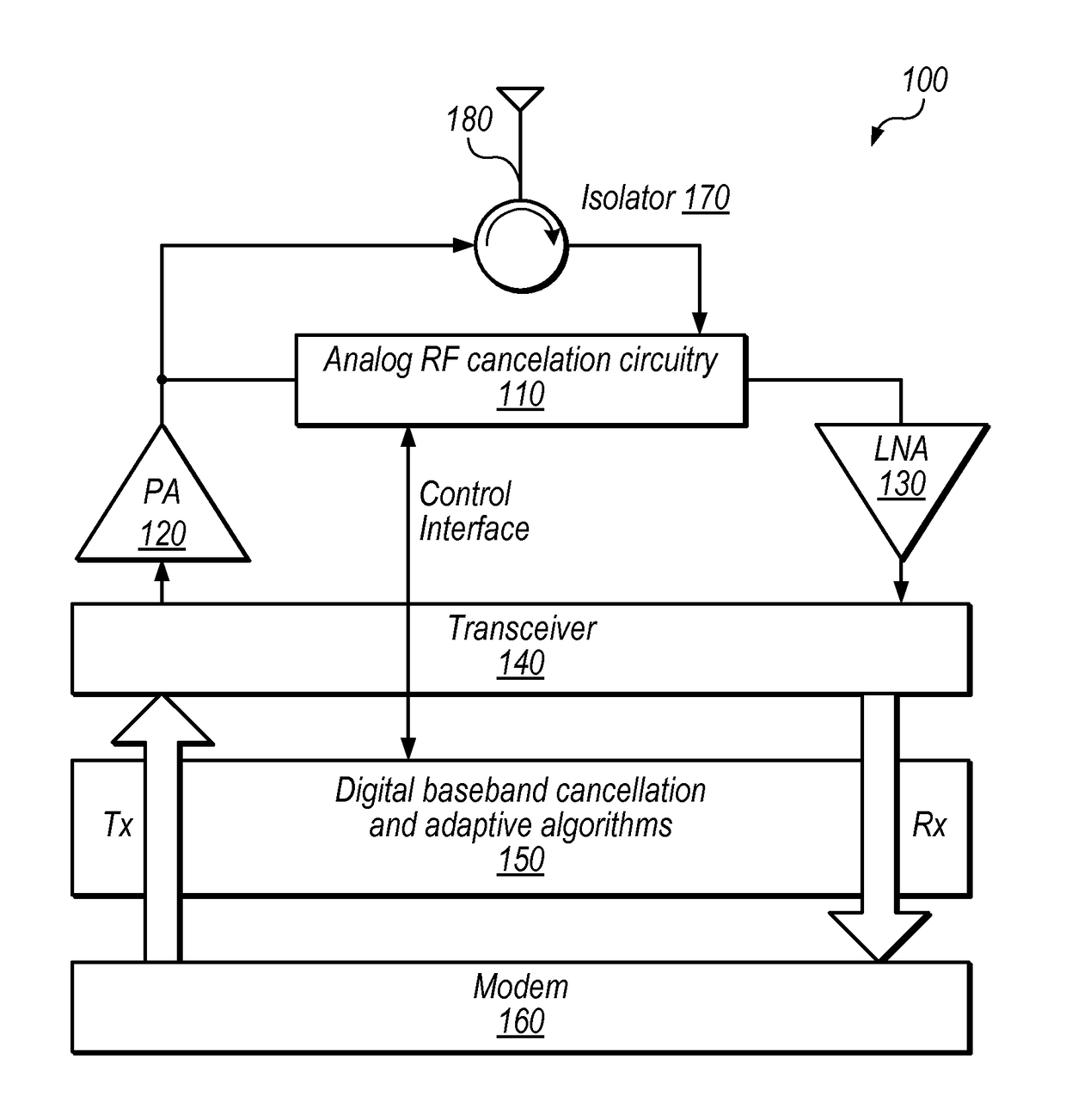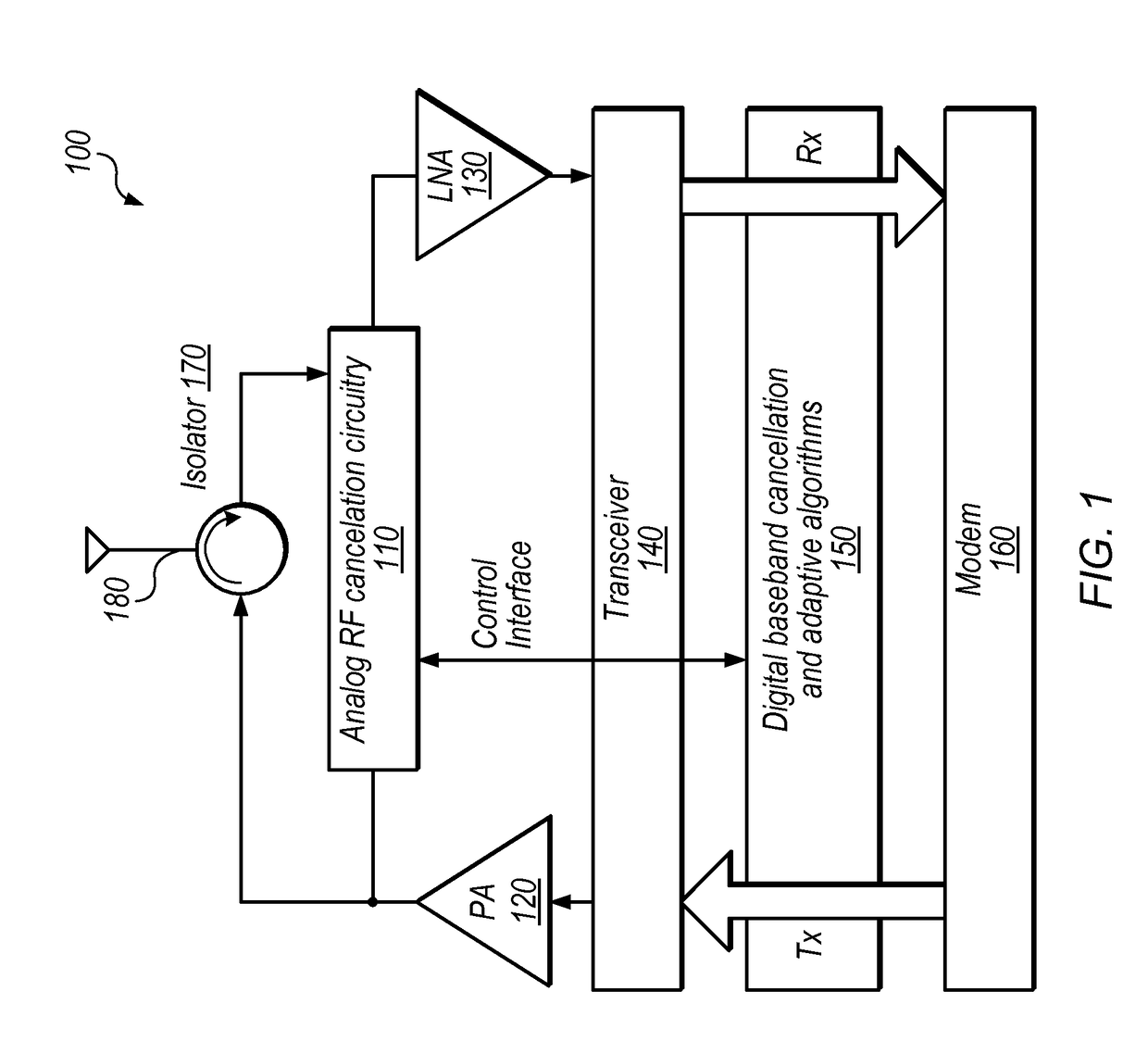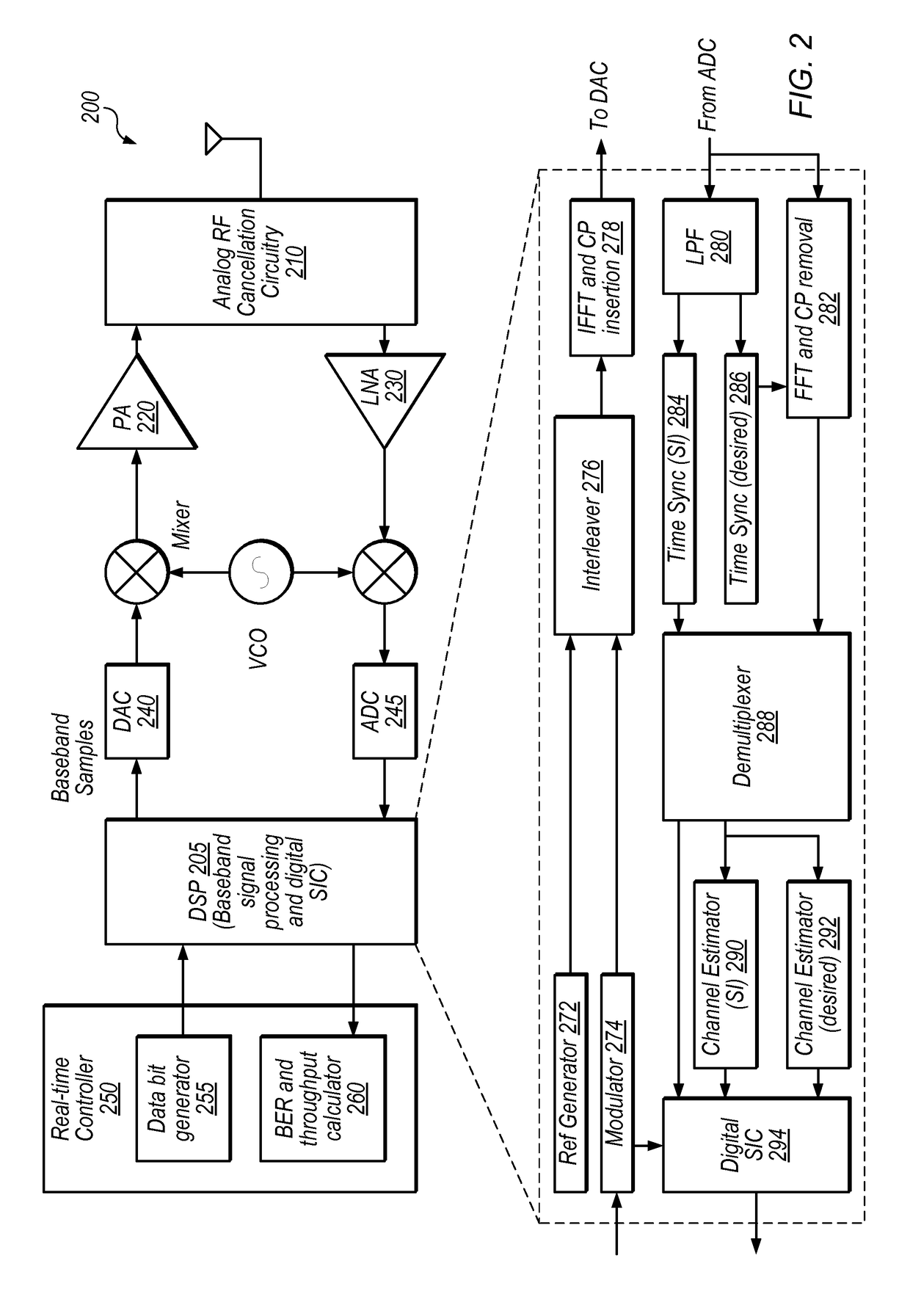Channel Quality Reporting for Full-Duplex Radio
a full-duplex radio and channel quality technology, applied in the field of full-duplex radio communications, can solve the problems of insufficient traditional techniques for reporting channel quality, insufficient frequency spectrum, and interference of transmitted radio signals with received signals, and achieve the effect of increasing overall spectral efficiency
- Summary
- Abstract
- Description
- Claims
- Application Information
AI Technical Summary
Benefits of technology
Problems solved by technology
Method used
Image
Examples
Embodiment Construction
[0014]This disclosure initially describes, with reference to FIGS. 1-2, an overview of full-duplex (FD) radio techniques. Exemplary techniques for determining and reporting channel quality for FD communications are discussed with reference to FIGS. 3-6. In some embodiments, the disclosed techniques may improve channel quality reporting by taking into account self-interference cancelation capabilities of communicating devices.
Acronyms
[0015]The following acronyms may be used in the present disclosure.
[0016]3GPP: Third Generation Partnership Project
[0017]AMC: Adaptive modulation and coding
[0018]CDMA: Code Division Multiple Access
[0019]CQI: Channel quality indicator
[0020]DL: Downlink
[0021]EVM: Error vector magnitude
[0022]FD: Full Duplex
[0023]FFT: Fast Fourier Transform
[0024]FPGA: Field Programmable Gate Array
[0025]GSM: Global System for Mobile Communications
[0026]LTE: Long Term Evolution
[0027]MIMO: Multiple Input Multiple Output
[0028]OFDM: Orthogonal Frequency-Division Multiplexing
[0029...
PUM
 Login to View More
Login to View More Abstract
Description
Claims
Application Information
 Login to View More
Login to View More - R&D
- Intellectual Property
- Life Sciences
- Materials
- Tech Scout
- Unparalleled Data Quality
- Higher Quality Content
- 60% Fewer Hallucinations
Browse by: Latest US Patents, China's latest patents, Technical Efficacy Thesaurus, Application Domain, Technology Topic, Popular Technical Reports.
© 2025 PatSnap. All rights reserved.Legal|Privacy policy|Modern Slavery Act Transparency Statement|Sitemap|About US| Contact US: help@patsnap.com



